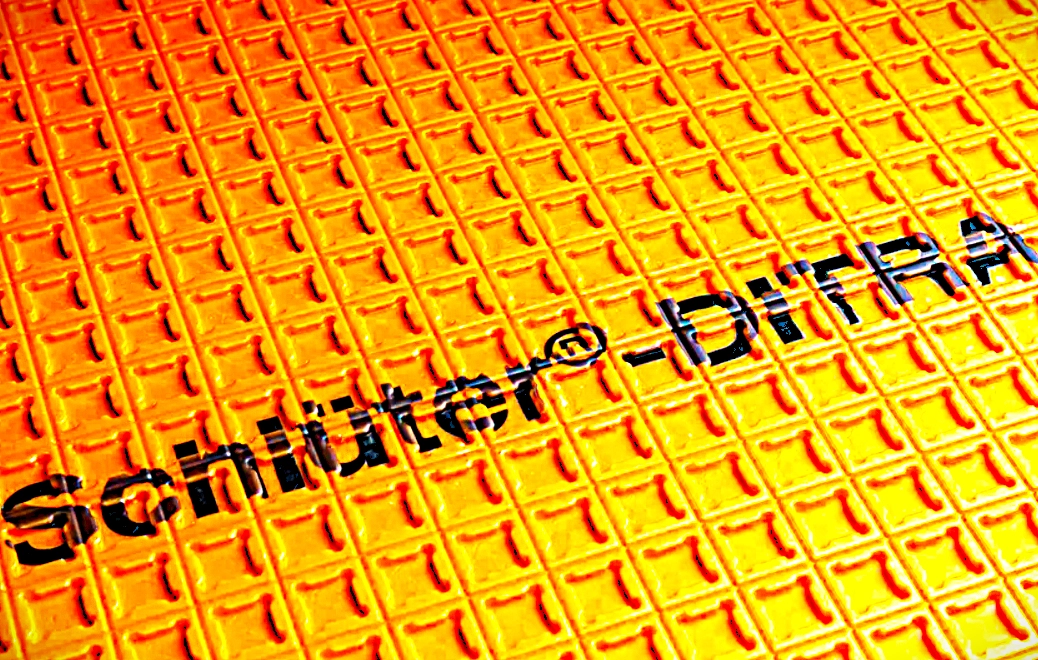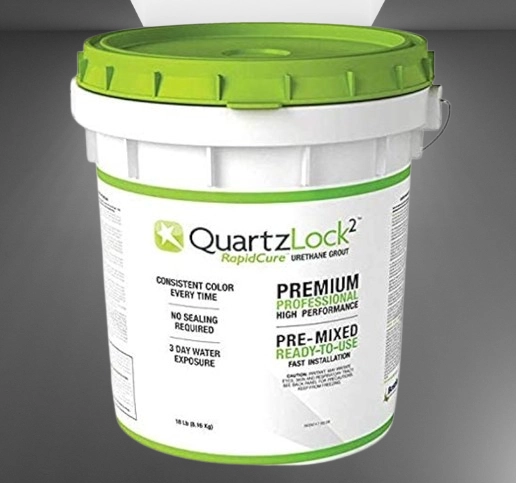Can DITRA Be Used on Walls?

Schluter DITRA distinguishes itself as one of the best choices for uncoupling membranes.
In addition to serving as an uncoupling mat, DITRA forms a waterproof coating to shield moisture-sensitive materials like plywood and OSB flooring. Tile installation is also made easier by this uncoupling membrane.
DITRA was created especially for floor use. You could be tempted to utilize it on walls because of its many amazing features. But does Schluter approve of DITRA being used on walls? Let’s investigate.
Is It Possible to Use DITRA on Walls?
DITRA can be used on walls, even though Schluter primarily talks about its use on floors. Some square waffles that thinset lock into during installation may be seen on the anchoring fleece on the bottom of DITRA.
Strong adherence between the walls and DITRA is ensured by this waffle design. As a result, you don’t need to be concerned about the uncoupling mat coming loose from the tiles’ weight. Anchor plugs can be used to strengthen the bond between DITRA and the walls.
It is uncommon to see DITRA on walls. Schluter KERDI is typically used on walls. However, it is feasible and realistic.
There are dangers. However, there is no reason for concern as long as the DITRA is mounted to the walls properly.
Does Anyone Have a Version of DITRA Specifically Made for Wall Use?
Indeed, there is a particular kind of DITRA that can be used on walls and floors. It’s called the Schluter DITRA-Heat-E. Schluter’s other DITRA mat varieties are mostly employed on floors rather than walls.
An uncoupling mat with heating capabilities is the DITRA-Heat-E. It produces a heated wall assembly that may be covered with stone or tiles.
Features including uncoupling, vapor retardant, and waterproofing are shared by this and the original DITRA versions. However, it also has the ability to break heat.
What Advantages Does Placing DITRA on a Wall Offer?
The installation of DITRA on walls has a number of advantages. For example, tile can be simply installed over it because it is a preferred tile substrate.
The other advantage relates to DITRA’s vapor-repellent and waterproofing properties. It will prevent moisture from seeping through your walls and harming drywall and OSB, among other materials. Because of this characteristic, DITRA is a good material for shower walls.
Since a wall isn’t a load-bearing substrate, DITRA’s uncoupling functions won’t be useful when mounted on one.
For what reason does Schluter only advise using DITRA on floors?
Because DITRA is an uncoupling membrane, Schluter doesn’t discuss its application on walls. The purpose of DITRA uncoupling mats is to absorb floor movement and stop it from migrating to the tiles, which could cause cracking.
There are lateral movements on every floor. For walls, the same cannot be true. For this reason, the DITRA uncoupling mat is not the only device that may be used to waterproof a wall.
In the end, DITRA was designed to be utilized exclusively on floors. On walls, it can be applied “off-label” to help waterproof the surface and make tile installation easier.
When DITRA is used on a wall, would the tiles fall out?
As previously stated, when DITRA is mounted on a wall, the waffle pattern on the back mechanically adheres to the thinset. Maximum adherence to the wall is guaranteed by this pattern.
Thus, you don’t have to be concerned about tiles sliding off as long as you install them properly. When placed on a wall, DITRA tiles can endure for many years. DITRA can be used off-label on the walls for this reason, among others.
When using DITRA on walls, will Schluter uphold its warranty?
You can experience issues with Schluter’s warranty if you don’t install the DITRA-Heat-E version on your walls. The problem is that DITRA advises using their uncoupling matting on floors.
It is likely that the warranty will be void if you proceed to use it on the wall and it malfunctions. Remember that the guarantee includes installation as a fundamental component. Your warranty may be void if you don’t follow the manufacturer’s installation instructions.
Make sure you have a builder’s warranty if your contractor is the one suggesting DITRA for walls. As a result, the contractor will be responsible for any damages if something goes wrong.
Which Is Better for Walls, Schluter DITRA or Kerdi?
Schluter produces a lot of building supplies. As a result, you might not have known which of these two is best for shower walls.
Schluter makes it apparent on their official website that Kerdi is a waterproofing membrane intended for usage behind walls.
Schluter KERDI produces a vapor-repellent and waterproof surface for walls. In addition to making tile installation easier, Kerdi has a limited capacity to avoid cracks.
The primary distinction between DITRA and Kerdi is that the latter has more sophisticated uncoupling capabilities. It can stop substrate motions from getting to the tiles and causing them to break.
Which of these two items is best to apply on walls, if you ever find yourself in that situation? Choose Kerdi. Conversely, DITRA is the best Schluter choice for floors.
How Can DITRA Be Installed on Walls?
Installing DITRA on walls follows the same steps as installing it on floors. Here is a brief guide, though, if you have never dealt with DITRA.
- Step 1: Get the wall ready.
DITRA sticks to a smooth, clean surface better. Since most walls are flat, leveling it out shouldn’t be too difficult.
Dust and other impurities can be eliminated by washing the surface with soap and water. Before proceeding to the following stage, allow it to dry.
- Step 2: Apply a bonding adhesive.
DITRA can be bonded to walls using Schluter Kerdi-COLL and unmodified thinset mortar. Since the latter is uncommon, I would suggest that you continue using unaltered thinset mortar. Apply the mortar to the wall with a trowel that has been notched.
- Step 3: Cut and fit DITRA mats.
After cutting the DITRA mats to the appropriate size, place them on the bonding adhesive with the waffle or anchoring fleece pattern on the underside. Work the mat into the glue until it seems to have stuck.
The mat can be pushed into the walls with laying boards. You’ll be finished once it has had time to dry.
Anchoring plugs can be used to help DITRA stay upright on a wall if you are unsure. Some are available at the hardware shop closest to you. The DITRA will be secured to the wall by these.
The DITRA can be tiled over once it is installed.
Is It Possible to Waterproof a Wall in Any Other Way?
There are other products that can be used to waterproof a wall besides DITRA. For waterproofing walls, there are hundreds of items that are ideal. Schluter’s KERDI is an excellent illustration.
This flexible sheet forms a waterproof membrane and sticks to walls nicely. Certain solutions, like RedGard, can also make your walls waterproof.
Liquid rubber membranes and elastic waterproofing paint are more options. These days, we even have unique varieties of drywall, like the waterproof green variant. Therefore, it’s a good idea to look into other possibilities before deciding to utilize DITRA on your walls.

